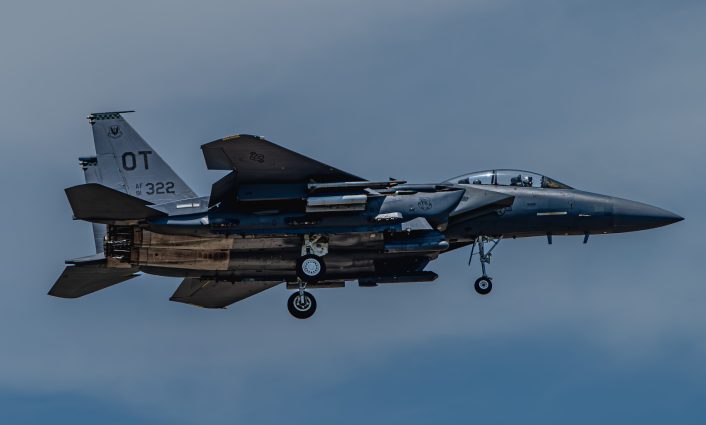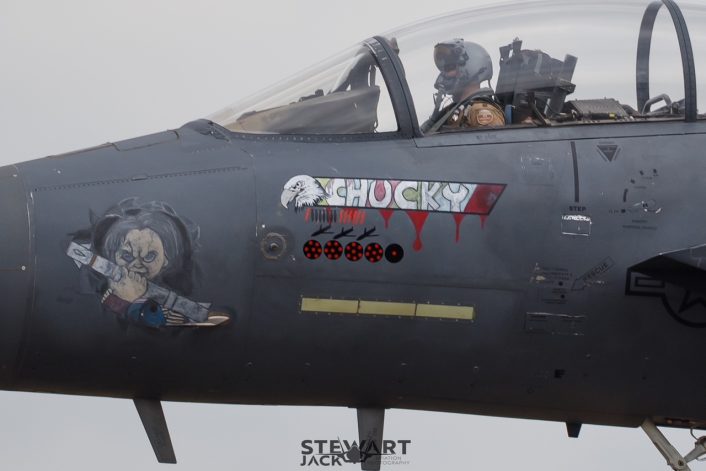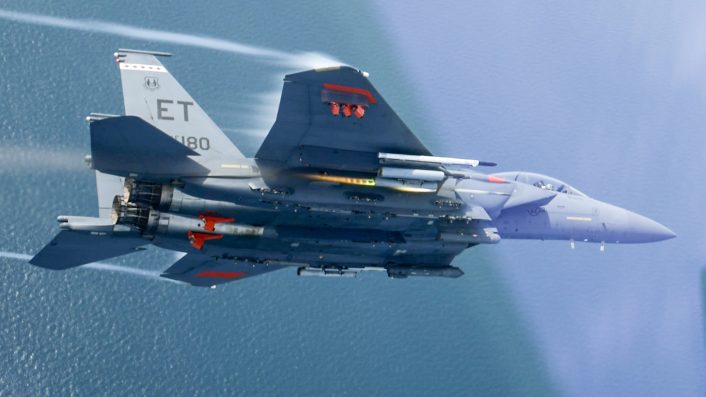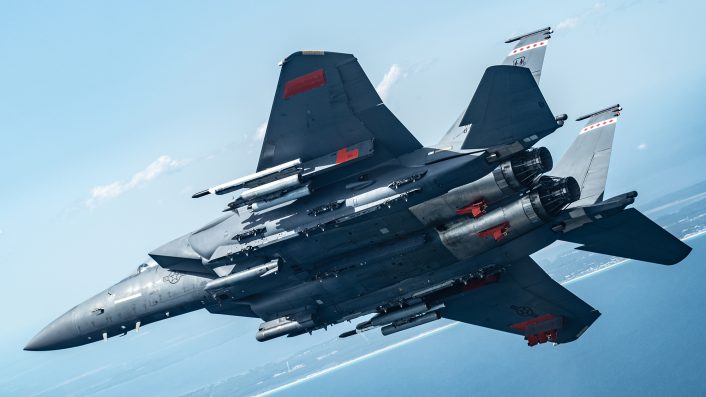The AGR- 20 APKWS II was extensively utilized in fight by Strike Eagles in the center East, but these are the very first pictures to in fact reveal an F- 15 E firing the laser-guided rockets during tests conducted in May 2025
United State Air Force F- 16 s released to the CENTCOM (Central Command) AOR (Area of Responsibility) have actually been using the APKWS (Advanced Precision Kill Weapon System) II in the air-to-air role versus Houthi projectiles over the Red Sea since 2024 The laser-guided APKWS II was a service to the cost negative aspect required by using the bigger AIM- 9 Sidewinder and objective- 120 AMRAAM, setting you back countless dollars, versus straightforward one-way assault drones, worth no greater than $ 15, 000
Integration of the APKWS II onto the F- 15 E started in May 2025, when images appeared online revealing Strike Eagles from Eglin Flying Force Base, Florida, flying in a variety of arrangements with LAU- 131 rocket launchers.


As explained at the time , with 6 LAU- 131 launchers the F- 15 E can bring 42 laser-guided rockets in addition to its common loadout of 8 air-to-air projectiles, a haul that provides the jet as much as 50 possibilities to engage airborne targets even before taking into consideration the gun, dramatically boosting its firepower and adaptability in fight.
The F- 15 E had been associated with safeguarding Israel against Iran’s drone assaults in April 2024 , when the restricted variety of readily available air-to-air projectiles proved to be a vital restriction in responding to the waves of hostile drones. An F- 15 E packed with multitudes of air-to-air rockets would have enabled longer and more efficient counter-drone sorties and this is the reason the assimilation was not unanticipated.
The work was successfully completed, and the anti-drone setup was used thoroughly in battle by the F- 15 E Strike Eagles of the 366 th Fighter Wing, as revealed by the bomb markings brought by the jets returning to their home bases from implementation between East in July.


Only just recently, nevertheless, did the Air Force launch extra details about the combination effort, including images showing the F- 15 E during live-fire occasions accomplished by the 96 th Test Wing and 53 rd Wing at Eglin AFB.
The road to fielding the AGR- 20 F
The assimilation and demonstration campaign, that included live-fire events against land and maritime targets, was part of a sped up press to provide the warfighter an instant brand-new tool for the counter-UAS fight, the united state Flying force stated.
Simply days after the last examination sorties at Eglin, Strike Eagles were currently flying operational missions with the AGR- 20 F.
“This was our top priority,” Brig. Gen. Mark Massaro, 96 th TW commander, stated. “The success originated from incorporated synergy, out-of-the-box thinking, and the ability to supply the capacity in document time.”


The effort started with a nine-month timeline however promptly ran into a materiel roadblock: no existing means to install the AGR- 20 F on an F- 15 AFSEO engineers, with the 53 rd Test and Examination Team, ultimately transformed to tradition hardware, especially 1970 s-era TER- 9 A racks and LAU- 131 launchers that had been slated for storage in Arizona. Designers and maintainers customized and installed the shelfs, then created a brand-new user interface to enable the Strike Eagle’s avionics to communicate with the rockets.
To fulfill urgent functional demand, airworthiness analyses and demo flights ran in parallel. Massaro made the AGR- 20 F the base’s number one priority, clearing the timetable for quick screening. Within 3 days of the order, F- 15 Es flown by the 40 th Flight Examination Squadron and 85 th and 422 nd TES launched the weapon.


The integrated developmental and functional examination effort was handled by the F- 15 Operational Trip Program Incorporated Examination Pressure, which integrated wings, significant commands, and program workplaces to keep the process relocating. Support devices across the base sped up logistics, array access, fueling, and goal preparation to sustain the rise.
Within nine days, the group completed a process that usually takes greater than a year. Airmen then released with the devices to the AOR, training staffs on work and sustainment of the brand-new tool.
Lt. Col. Jeffrey Entine, OFP CTF leader, summed up the initiative: “Our capability to choreograph several risky examination occasions and supply a complete item to the warfighter in 9 days as opposed to 18 months reveals what Group Eglin can do when charged.”


Managing the APKWS here’s what we created in a previous story right here at The Aviationist :
[…]
Originally created as a low-cost, laser-guided accuracy munition for air-to-ground targets, APKWS II was first tested for air-to-air usage in 2019 It supplies an affordable option for engaging slow-moving airborne risks such as drones and cruise ship missiles. During current procedures, F- 16 s have normally operated in sets: one airplane assigned the target utilizing the Sniper Advanced Targeting Hull, while the various other carried out the attack run with the rockets.
Contrasted to typical air-to-air rocket loadouts, the APKWS configuration permitted the F- 16 to boost its involvement ability considerably. While a standard tons of goal- 9 X and goal- 120 projectiles offers six shots, lugging one or two rocket coverings with APKWS made it possible for the Viper to triple that number. This was achieved at a portion of the expense as each APKWS rocket is approximated at around 30, 000 USD, while an AIM- 9 X expenses around 450, 000 USD and a goal- 120 exceeds 1 million USD per unit. The tradeoff, nevertheless, is that APKWS rockets are only effective versus foreseeable targets with minimal ability to move.
The loadout recently examined on the F- 15 E takes the concept also further. With 6 LAU- 131 sheathings set up, the Strike Eagle can lug up to 42 APKWS rockets in addition to its typical enhance of eight air-to-air rockets. This offers the aircraft approximately 50 interaction possibilities prior to even accounting for the interior weapon. The layout additionally gives higher functional versatility: the Defense Equipments Policeman in the rear can laser-designate targets using the Sniper ATP while the pilot concentrates on the involvement, getting rid of the demand for paired operations like those carried out with the F- 16
The combination of APKWS II on the Strike Eagle seems a sensible development. During the April 2024 Iranian drone attack against Israel , F- 15 Es were amongst the aircraft tasked with obstructing the wave of incoming drones. One of the limiting factors during that procedure was the minimal variety of air-to-air rockets readily available per jet. An F- 15 E outfitted with a high-capacity rocket loadout would dramatically expand the duration and effectiveness of counter-UAS sorties.
APKWS II has currently been fielded across a number of united state platforms, consisting of the USMC’s AV- 8 B Harrier and F/A- 18 C/D Hornets, AH- 1 Z Vipers and UH- 1 Y Poisons, the USAF’s A- 10 Cs and F- 16 s, the U.S. Navy’s MH- 60 R/S helicopters, and the U.S. Military’s AH- 64 D/E Apaches.
The APKWS II is based on the Hydra 70 unguided rocket and includes a laser assistance kit between the warhead and the rocket motor. This affordable alteration transforms a basic unguided munition into a precision weapon. The system utilizes four pop-out wings with laser-seeker optics, known as the Dispersed Aperture Semi-Active Laser Applicant (DASALS), which provide broad field-of-view monitoring for both fixed and moving targets.
To even more enhance its counter-UAS abilities, the APKWS went through an upgrade under the Fixed Wing, Air Launched, Counter-Unmanned Aircraft Solutions Ordnance (FALCO) program. The AGR- 20 FALCO variation consists of upgraded software application that enhances its efficiency in air-to-air functions. This variation is already in operation within the CENTCOM area of obligation and has demonstrated a high probability of kill in functional scenarios.
On top of that, BAE Solution has actually revealed a new infrared candidate for the APKWS II, enhancing the laser support and making the rocket a dual-mode weapon. This enhancement builds upon the FALCO upgrade and is anticipated to more enhance the Flying force’s capability to counter a large range of airborne risks.